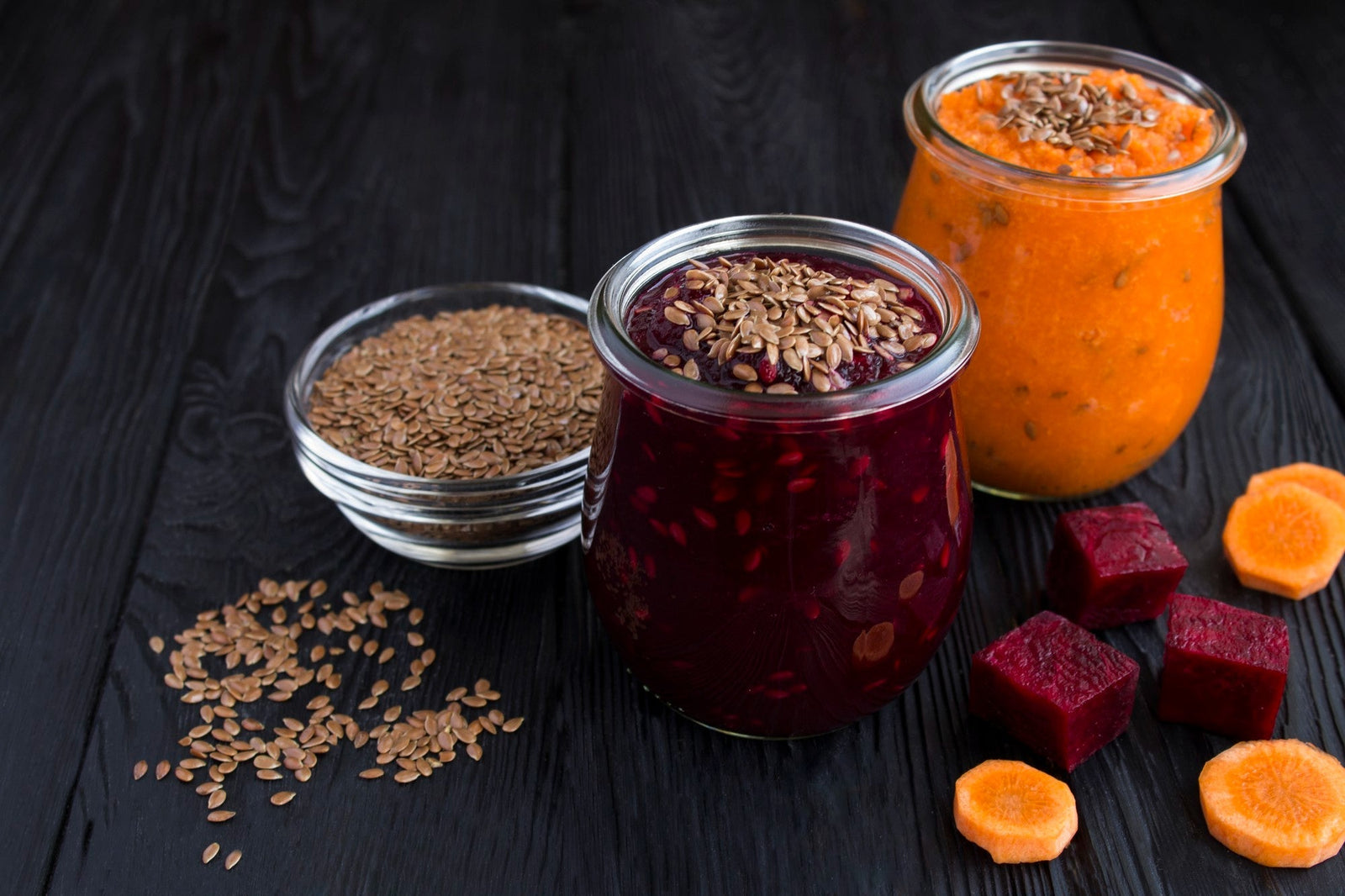
August 24, 2021 2 min read
Lentils are a superb source of vegetarian protein and are great for rounding out soups or making salads more filling. They come in an unprocessed form and are quicker to prepare when compared with dried beans. Most have a fresh, earthy flavor that blends well a variety of ingredients. However, there are different varieties of lentils, each with its own set of culinary perks. The most common of these types are red and green lentils.
Red Lentils
 Red lentils are among the hulled varieties of lentils and are generally available in split form. Red lentils can range from pale gold to orange to red hues. This variety of lentils is the sweetest and nuttiest of all and one of the easiest types of lentils to cook. Cooking times for red lentils can go up to about 30 minutes but they tend to get mushy and disintegrate when cooked. This makes red lentils well suited for
Red lentils are among the hulled varieties of lentils and are generally available in split form. Red lentils can range from pale gold to orange to red hues. This variety of lentils is the sweetest and nuttiest of all and one of the easiest types of lentils to cook. Cooking times for red lentils can go up to about 30 minutes but they tend to get mushy and disintegrate when cooked. This makes red lentils well suited for
Indian culinary creations like daal, curries, and other dishes that required a pureed texture. Red lentils can also be used to thicken soups and added to casseroles.
Green Lentils
 Green lentils on the other hand can be pale or mottled green-brown in color with a glossy exterior. They are available in whole form and when compared to red lentils, this lentil variety keeps its shape and firm texture after cooking. However, green lentils take the longest time to cook which can often go up to about 45 minutes or more. Because the lentils retain a firm texture after cooking, they make for a very suitable addition to salads and other side dishes. Given their ability to retain their shape well after cooking green lentils can also be eaten on their own.
Green lentils on the other hand can be pale or mottled green-brown in color with a glossy exterior. They are available in whole form and when compared to red lentils, this lentil variety keeps its shape and firm texture after cooking. However, green lentils take the longest time to cook which can often go up to about 45 minutes or more. Because the lentils retain a firm texture after cooking, they make for a very suitable addition to salads and other side dishes. Given their ability to retain their shape well after cooking green lentils can also be eaten on their own.
Thanks for reading this Be Still Farms Blog article. To sign up for more news/articles and/or recipes, click here. For more about us, click here. To shop our certified organic products, click here.
Please comment and share and we look forward to serving you in the future!
Comments will be approved before showing up.

January 27, 2025 3 min read
Flaxseed, the tiny yet powerful superfood, is packed with nutrients that can support weight loss. From curbing hunger to stabilizing blood sugar, this guide dives into the science of how flaxseed can help you shed those extra pounds.

December 11, 2024 3 min read
Discover three quick and easy soup recipes featuring organic small red beans. From a classic vegetable soup to a creamy potato blend, these wholesome recipes are perfect for chilly days and busy weeknights. Packed with flavor and nutrition, these soups will warm your heart and soul this winter!

December 06, 2024 3 min read
This vibrant and nutritious Green Lentil Salad combines tender lentils with grilled chicken, fresh vegetables, and a zesty lemon dressing. Packed with protein, fiber, and essential vitamins, it’s the perfect healthy meal for any time of day.
© 2025 Be Still Farms- Real, Fine Organics.
Privacy | Terms | Refund Policy | Organic Certification
